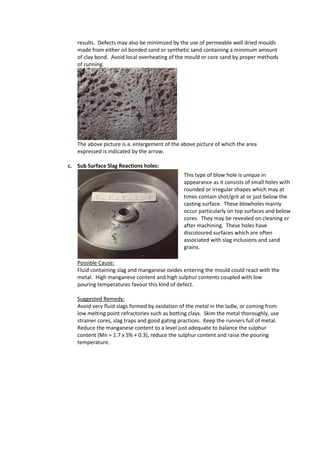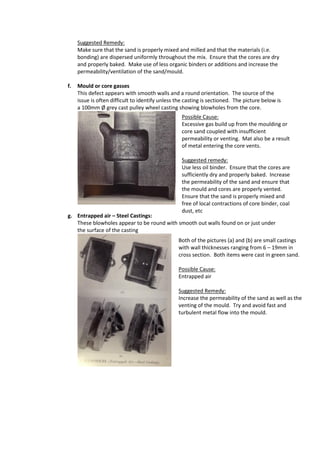This document discusses various types of blowholes that can occur in castings, including wet sand blowholes, surface blowholes, subsurface slag reaction blowholes, subsurface blowholes, mould or core gas blowholes, entrapped air blowholes, and chaplet blowholes. For each type of blowhole, the document describes possible causes and suggested remedies to prevent or reduce the occurrence of that specific blowhole type in castings. The document is intended to share information on casting defects in order to help those working in the casting industry address and remedy quality issues.





